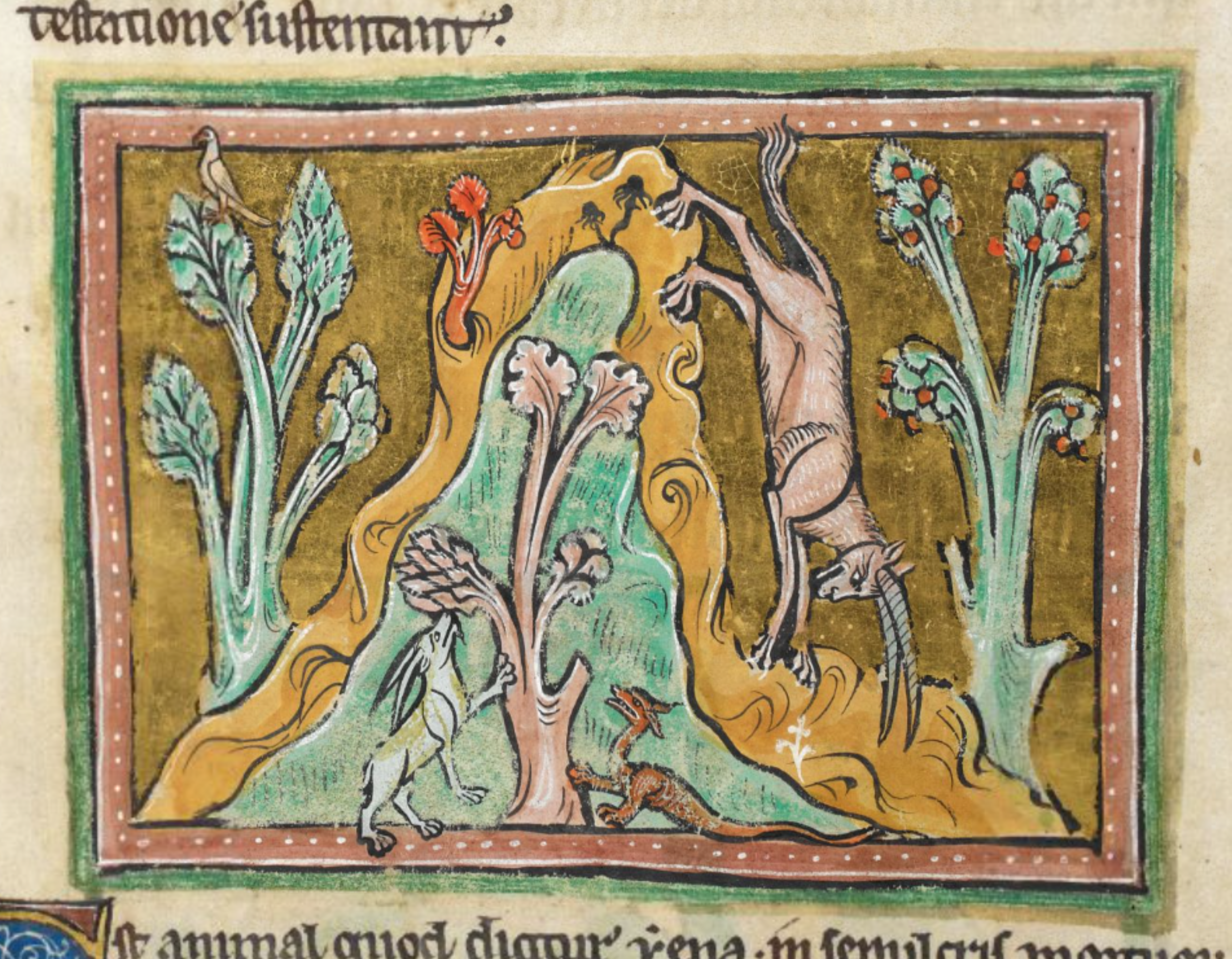
Ibex, Rochester Bestiary, c.1230
Search page
Search within this page here, search the collection page or search the website.
Index
Beaver, Rochester Bestiary, c.1230
Hyena, Rochester Bestiary, c.1230
Ibex, Rochester Bestiary, c.1230
The ibex might have represented watchfulness and vigilance in Christian symbolism. Such vigilance was often associated with the need for Christians to be alert and watchful against the temptations of sin and in their spiritual journeys.

This animal’s white coat and graceful appearance could have been seen as a metaphor of innocence and purity, aligning with the Christian ideal of purity of heart and soul. The white ibex could have also represented the innocence of Jesus Christ.
The ibex could also be seen as the wild goat that Abraham sacrificed to God instead of his son Isaac, as mentioned in Genesis 22, meaning that the ibex cold have been associated with sin.
Some theories suggest that the ibex was hunted for its meat and some body parts were used for medical purposes, for instance, its horns were believed to cure impotence and its blood kidney stones.
F14v
quorum tanta uis est ut si ab alto montis. ad ima de-
missum fuerit; corpus eius totum hiis duobus cornibus sus-
tentetur; illesum Significat autem eruditos homines.
qui duorum testamentorum consonantia quicquid eis aversi
acciderit; quasi quodam salubri temperamento; tempera-
re solent. et uelud duobus cornibus fulti; bona que perpe-
trant veteris testamenti. ac evangelice lectionis at-
testatione sustentant.
The ibex has two horns, the power whereof is so great that if it fell from the top of a mountain to the bottom, its whole body would be supported by these two horns unscathed. However, the ibex represents those learned men, who endure whatever adverse events befall them in keeping with the teachings of the Two Testaments and are able to remain moderate in the face of adversity. These men are able to sustain the good deeds accomplished by the Old Testament and the testimony of the Gospel teachings in the same way as the ibex is sustained by its two horns.
Bibliography
David Badke, The Bestiary Blog: Animals in the Middle Ages, Ibex, November 6 2023, https://bestiary.ca/beasts/beast154.htm
Josh Goldenberg (BA 2012) and Matt Shanahan (BA 2014, Logeion, November 2022, https://logeion.uchicago.edu/
Castiglioni, L. and Mariotti, S. (1996). Vocabolario della Lingua Latina: Latino-Italiano Italiano-Latino. Terza Edizione. Loescher Torino
Wikimedia Foundation, Inc, Wikepedia: Ibex, 27th October 2023, https://en.wikipedia.org/wiki/Ibex
Matthews, J. and Matthews C., (2010), The Element Encyclopedia of Magical Creatures, HarperCollins UK, London
Curley, M. J., Physiologus: A Medieval Book of Nature Lore (University of Chicago edition 2009)
Rackham, H., M.A., Pliny Natural History Volume III, Libri VIII-XI (London: William Heinemann Ltd, 1949)
Collins, A. H., M.A., Symbolism of Animals and Birds (New York: McBride, Nast & Company, 1913)
Henderson, C., The Book of Barely Imagined Beings (London: University of Chicago Press, 2013)
White, T. H., The Bestiary: A Book of Beasts (New York: G.P Putnam’s Sons, 1960)
Barney, S. A., Lewis, W. J., Beach A., Berghof O., The Etymologies of Isidore of Seville (New York: Cambridge University Press, 2006)
